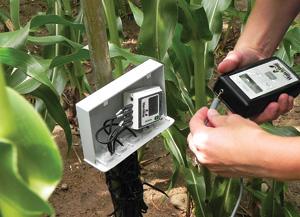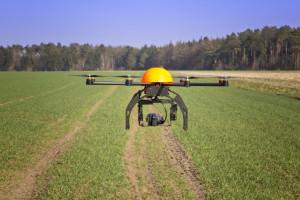3D Printing and Other High-Tech Solutions Could Create Lots of New Jobs in Agriculture
Now agriculture is changing again, and, according to Charlie O’Brien, senior vice president of the Association of Equipment Manufacturers, the field is harboring a lot of new career opportunities – particularly technology-based ones. Farmers and tech geeks may never have thought their paths would cross more than incidentally, but that’s exactly what’s happening.
“Agriculture has evolved into an incredibly sophisticated industry, a dream job for technology enthusiasts,” O’Brien said. “No wonder companies like Google are looking at our sector with great interest.”
Unsurprisingly, 3D printing is one of the technologies that has been instrumental in changing the agricultural industry. Equipment manufacturers are using a lot of 3D modeling and printing in production, as well as robotics. It isn’t just the giant corporations who can benefit from the technology, though. O’Brien foresees 3D printing making its way directly onto farms, where farmers can print new parts and equipment on-site, on-demand.
Technology has, in fact, been blamed for the “death of the small farmer,” and that is true in many respects: technological and chemical developments have led to easy mass production, putting many family farms and small businesses out of commission. Phil Jennings, service manager at Kinze Manufacturing, thinks that individual farmers can turn the newest technology to their advantage, however. Technology has become much more personal in recent years; 3D printers, robots, and even drones are being made accessible to individuals rather than just large corporations. By utilizing some of these developments, small farmers can become more efficient and productive. It’s not always an easy sell, though.While agricultural advancements have been major contributors to environmental damage, the newest advancements could actually help to lessen some of those negative effects. Smart technology and more efficient manufacturing methods could go a long way towards reducing waste. We’ve seen 3D printing consistently reduce time, cost and materials in just about every industry, and agriculture is no exception. Furthermore, smart data applications are allowing farmers to be better informed than ever before. Sensors, drones and other smart technologies enable the gathering of very precise, accurate information about soil, weather, pests, etc. The more information that is available, the better prepared farmers are, which leads to higher production and less waste.“Farmers are asking if some of this technology will lead to a positive return on their investment,” Jennings said. “Farmers want to be sure that what they’re doing adds value…We need to step out of our comfort zone a little bit and take some training on new technology components to improve our bottom line.”
And, of course, it all leads to more jobs. Current farmers may not have much tech background, so that’s where job creation comes in. Engineers, software developers and other tech experts are needed to implement industry-changing applications both on small farms and within larger agricultural corporations.
“If you are a technology buff, ag equipment manufacturing and the development and creation of products used on the farm is the place to be today,” O’Brien said.
Among applications for 3D printing we’ve already seen emerge in farming communities are such creations as 3Dponics’ urban farming systems, a 3D printed drone that can monitor crops, a way to test crop seeding systems, Food Rising’s mini-farm grow box system, and even a 3D printed insect trap to ward off damage to crops. With awareness rising of the benefits high-tech solutions can bring to traditional agricultural problems, it seems clear we’re bound to see more convergence. Tell us your thoughts on the benefits of these applications in the 3D Printing and Agriculture forum over at 3DPB.com.
Subscribe to Our Email Newsletter
Stay up-to-date on all the latest news from the 3D printing industry and receive information and offers from third party vendors.
Print Services
You May Also Like
New Business: Temporary, Migratory, & Modular 3D Printed Architecture
If we look at potentially emerging 3D printing businesses, then architecture has not been fully explored. Yes, there is a lot of house 3D printing going on worldwide. From deployable...
3D Printing News Briefs, April 19, 2025: Material Extrusion Standard, Metal Powder, & More
In today’s 3D Printing News Briefs, we’re covering a proposed standard for material extrusion, before moving on to business and metal powder. We’ll end with a commercial store’s robotic 3D...
Japan Unveils World’s First 3D Printed Train Station
Japan is now home to what we believe is the world’s first train station built with 3D printing technology. Located in Arida City, just south of Osaka, the new Hatsushima...
restor3d Raises $38M to Expand 3D Printed Orthopedic Implants
Backed by $38 million in new funding, restor3d is pushing ahead with the launch of four personalized implant lines, set to roll out in 2025 and 2026. This latest venture...




























